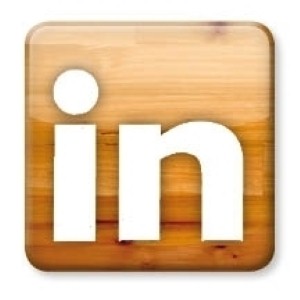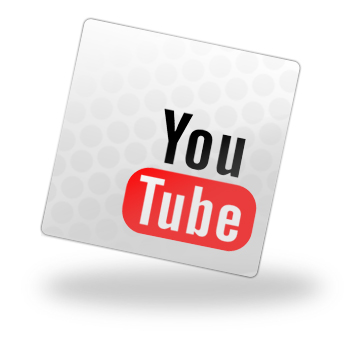Are you certain Twitter is the backbone of your social media marketing? Do you think Snapchat is a flash in the pan that offers little value to your business? Or are you lost in the fractured social media landscape and seeking information about which networks make sense for your company.
Our Social Media Team is here to test your instinct in March Madness tournament that pits new networks against originals, consumer-facing platforms against those designed for businesses to see which channel dominates.
In our first round, we’re looking at the undeniable value propositions each network brings to the table, and the networks you choose will advance to the next round. Vote for your favorite network, or the one you want to learn the most about, to guarantee its spot in the next round because four will be eliminated.
Read on, then use this form to cast your vote:
Facebook: The reigning king of social media

Why is Facebook still king of social media marketing? From the high profile acquisition of texting client WhatsApp, to launch of the elegant Paper, Facebook’s consistent dominance has been shunted in favor of more newsworthy stories. But countless studies indicate that building an engaging Facebook presence is still the best way to build customer loyalty and generate conversions.
Facebook reigns over social conversions: With over a billion active users, the platform retains a monster edge in pushing branded content in front of consumers’ eyes. Nearly one in three of all Facebook users have bought a product online after sharing, liking, or commenting on it.
The bottom-line benefits don’t stop there. Business Insider recently published a report on the average time users spend on each network per day. Facebook dwarfs the competition with 3.7 times more minutes than the next – Instagram.
That suggests that even if users are not actively engaging, their attention is still absorbed by Facebook content, encouraging brand loyalty that often translates to off-screen conversions, or “reverse-showrooming.” in fact, 38 percent of users admit to purchasing products or services after engaging with them on Facebook (topping Pinterest).
There are many indications Facebook has longevity. The decisive WhatsApp deal is considered to be indicative of a progressive attitude toward change. Its endorsement of mobile and prioritization of visual media have situated the giant as an attractive suitor for many innovative startups, demonstrating financial ability to diversify and strengthen its position as the most powerful communication distribution platform.
– Courtney Frazee
LinkedIn: The place to make professional connections

Hypothetical scenario: You need to make a presentation and your goal is to reach as large of a captive audience as possible. There are two venues you can choose for your presentation.
Option A is a well-attended venue for presentations; everyone is either there to watch presentations or make presentations.
Option B is another well-attended event, but you can’t be certain as to the reason anyone is at the venue at any given time. Also in the same room there is a standup comedian performing a set, a juggling cat and a baby singing karaoke. Where do you present?
In the wild world of social media, LinkedIn is option A. All business want to engage their
audiences, but they need to find an audience ready to engage.The wonderful thing about LinkedIn’s 187 million unique monthly visitors is that they’re all there to interact with businesses. No one visits LinkedIn to goof off. They visit to network, recruit, look up a business or an employee, read an article or have a conversation.
This is why studies have found LinkedIn to be 277 percent more effective for lead generation than Facebook and Twitter. Around 2.75 percent of website traffic that comes from LinkedIn leads to conversions, while the conversion rate of the competition is just below 1 percent.
More than any other network, LinkedIn provides tools for businesses to interact with
interested parties. There are over two million groups across industries, and if you don’t find a group that covers a field of business you’re interested in – you can create one.All this makes LinkedIn the best social media network for businesses.
– Robert McHugh
Instagram: Where to share pictures & build a brand image
Instagram used to be a social media underdog. It wasn’t too long ago that the company was providing service to 5 millions users with only four employees at its helm. Yes, four!
Like any good startup Cinderella story, the app’s creators knew what was missing from our social media lives and filled that void. Facebook and Twitter fulfilled our status update needs, YouTube owned video sharing and LinkedIn was our virtual resume.
Instagram offered something new: Photo sharing. Simple square snapshots show your friends what you’re up to (and make it look even better). With everyone immersed in smartphones, this was the next natural step. Now that it’s here, I, for one, can’t imagine living without the app.
Much like Facebook’s transition from a service for individual users to a platform offering Pages for companies, Instagram created a space for brands. Pretty soon, we embraced the idea of following companies on Instagram, curious for a sneak peek at what our favorite brands were doing behind the scenes.
Don’t take my word for it. A recent study claimed Instagram is “the best platform for brands” in 2013, beating out the more established Twitter, Facebook and Google+. Any brand that sells visual products should be on Instagram, otherwise they’re missing out on opportunities to gain more customers and revenue. However, they’re also missing out on a prominent place to build brand awareness.
– Kristen Fritz
Twitter: Fast-moving newsfeeds are ideal for content sharing

Like a camp counselor playfully entertaining the competition of his kid campers in a game, Twitter is and has been the winner of this contest from the outset. No social media platform is designed for marketers, but the essence of the microblogging service is one that meshes more harmoniously with marketing interests than any other social site.
Here’s the powerhouse lineup of Twitter elements that make up an all-star team for marketers:
1) Ease of use and action. Twitter is a “frictionless” social network: it’s extremely easy to post, share, and engage here. Moreover, the posting culture of Twitter promotes copious interaction and frequent posting. So you can send out oodles of content to an audience that is primed to
share on a platform that makes sharing simple.2) Buzz. Twitter is a freaking hornet’s nest. This network is the temple of viralty, and people want to drink the Kool-Aid – they want to be involved to the point that they will do your job for you by sharing your content.
3) News is broken on Twitter. If you are active on the network, you are connected to a tool that will keep your brand relevant and trending.
4) Growth. It is extremely easy to earn followers on Twitter. Audience targeting and hashtags
actually work on this network (ahem, Facebook), and people don’t have to follow you for you to
engage with them. Further, you ALWAYS reach your followers’ feeds. Algorithms don’t judge
your post and determine who sees it.5) Anything goes! Pictures, videos, text, slideshares: All can and do make their homes on Twitter.
– Max Adagio
Snapchat: Turn your content into a limited-time offer
Ask any Millennial to name his or her most used smartphone apps and you’ll more than likely hear “Snapchat!” What started out as a college project at Stanford University has now seen over
60 million installs, 30 million monthly active users and 400 million daily message exchanges.Snapchat is a photo messaging app which allows users to take photos and record videos with
added text and drawings. These messages can then be sent to a list of recipients with a time limit – anywhere from one to ten seconds. Once opened, the images are hidden and deleted from the app’s database.In October 2013, the platform launched “Snapchat Stories,” giving users the ability to create a series of messages that can be viewed an unlimited number of times over a 24-hour period, essentially blowing the door wide open for commercial marketing opportunities
While the app originally grew in popularity due to the “selfie,” brands are beginning to realize the potential for marketing power.
Considering today’s social media users, Snapchat is the perfect marketing platform for companies. Not only is it completely free for companies to use, but messages with an expiration
date ensure that customers are paying attention to real-time updates.And if you want to give your fans a little more time to view messages, Snapchat Stories are the solution. These options are great for creative campaigns and promotions, from exclusive perks, to rewarding engaged customers and giving a “behind the scenes” look at your operations.
– Rachel Caruso
YouTube: The network where content goes viral

Created by three former PayPal employees in 2005, YouTube has quickly grown to attract over 1 billion unique visitors to the site each month. YouTube’s differentiating factor lays in the vast amount of user-generated content created specifically for the site. The site’s user experience is further enriched by its built-in social network, and channels that foster user engagement, offering a platform where brands can interact with customers on a targeted, hyper-personal level based on audience interests.
How often do you see a Facebook post go viral on Twitter or vice versa? YouTube content gets shared all over the internet via other social networks, email chains, company websites, etc. YouTube is one of the few social networks where users’ posts go on to be promoted across various networks, constantly redirecting users back the YouTube website.
Here’s proof: The equivalent of 500 years of YouTube video content is viewed on Facebook daily, and 700 videos are shared on twitter every minute.
The question remains, why should marketers direct their efforts to YouTube? To start, the network’s top users fall into the Millennial group; the target market that businesses are quickly finding to be the most difficult to reach.
As opposed to typical banner ads which have a CTR of 0.05 percent, YouTube offers non-skippable advertisements that require the user to watch from start to finish. Marketers who leverage this network are better able to target demographics based on interests and relevance to their brands, ensuring their messages are delivered to relevant audiences.
– Kyle Gaw
Google+: FInd actual conversations in Communities

As the Social March Madness tournament begins to take shape, why don’t we take a look at one of the most, if not the most exciting contender in this year’s bracket: Google+.
Nowhere else will you find a more complete package than with Google’s very own social network. I won’t bore you with facts, such as Google+ being the second-largest social networking site in the world with 540 mill. monthly active users or that it reached 10 mill. users while still in beta testing. No, these things don’t impress.
It’s what Google+ offers and how it enhances the online experience for users all across the globe that makes it so incredibly dominant in an already talent-packed field. There’s really no need to bring out the big guns just yet, so let’s take this time to focus on a feature that while heavy in firepower, is not exactly new: Google+ Communities.
Want to engage in meaningful discussions? Looking for a place where you can challenge other people’s ideas and expect your thoughts to be challenged by others? Then Google+ is where you belong.
If blatantly promoting your website is your idea of a good time, then Google+ Communities is not the place for you. However, there are other networks, (that shall remain anonymous for the time being) where this sort of behavior is tolerated.
Much more on Communities as well as Google+’s entire arsenal to come.
As I alluded to earlier, it is not my intention to draw blood just yet. But stay tuned for what shall be a one-sided, yet exciting tournament.
– Justin Oram
Pinterest: The eye candy your brand needs
Who doesn’t love to look good? With Pinterest, it’s impossible not to. This visual social media tool has gained a significant audience thanks to its engaging images, information sharing and ecommerce platform. What some companies may not realize is: Pinterest can be just as beneficial to them as it could be for a 20-something who recently got engaged.
With more than 70 million people on Pinterest, there are plenty of opportunities to get an audience. Many people are visual learners – and whether they’re looking for the perfect centerpiece idea, a dinner recipe for tonight or books to add to their reading lists or new DIY tips, Pinterest is the go-to place.
If you’re an ecommerce business, it is a must to be on Pinterest. Not only can you share your own merchandise for the masses to see, you can also be viewed as an industry leader.
Your boards can tell a story. Think about anything that would attract your audience and be sure to pin your own products, as well as relevant images that people will want to share. Descriptions are important, too. Sell kitchen products? Post pictures of recipes so delicious that people want to lick their screen, but be sure to include which of your products can make this dish a reality in the description.
Think of Pinterest as a billboard without cost. You can post any products you want for the masses to see, and it doesn’t cost you a cent. Pinterest serves as the advertisement you need to take your business to the next level.
– Jill Dilibero

